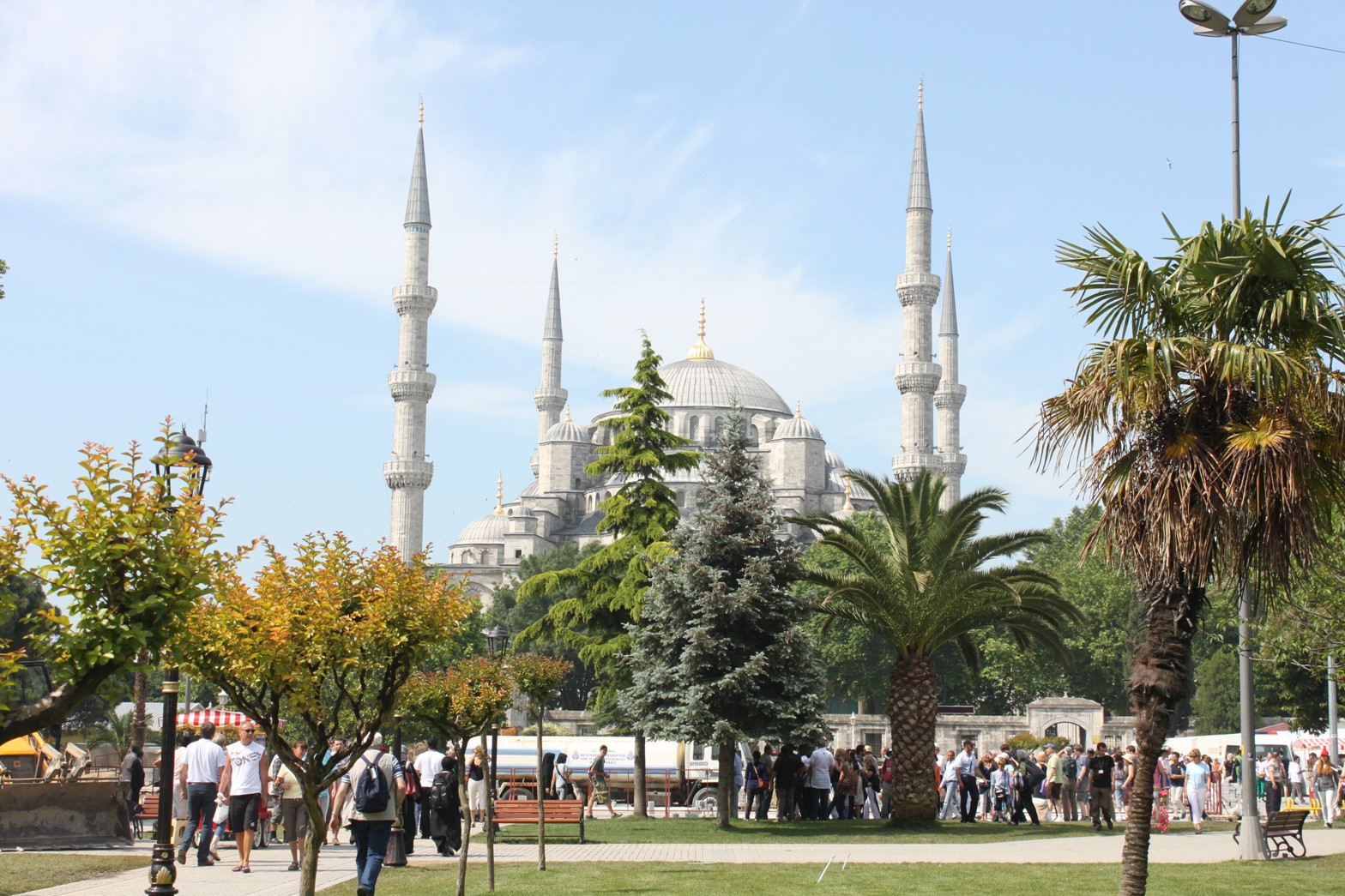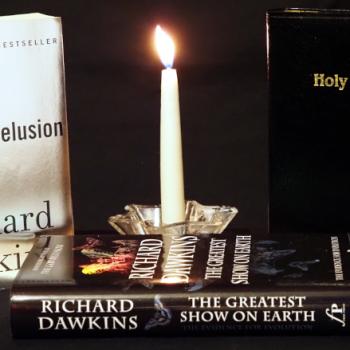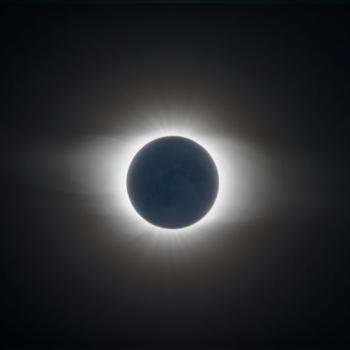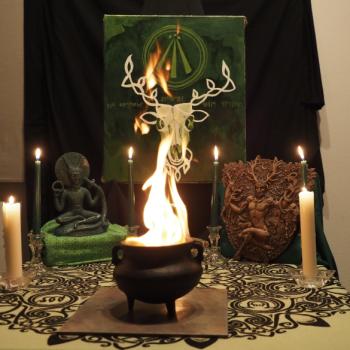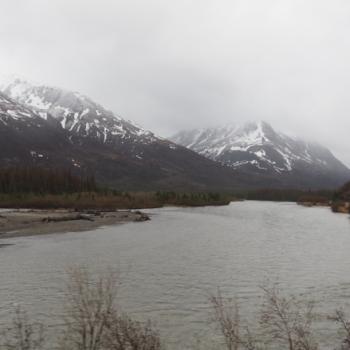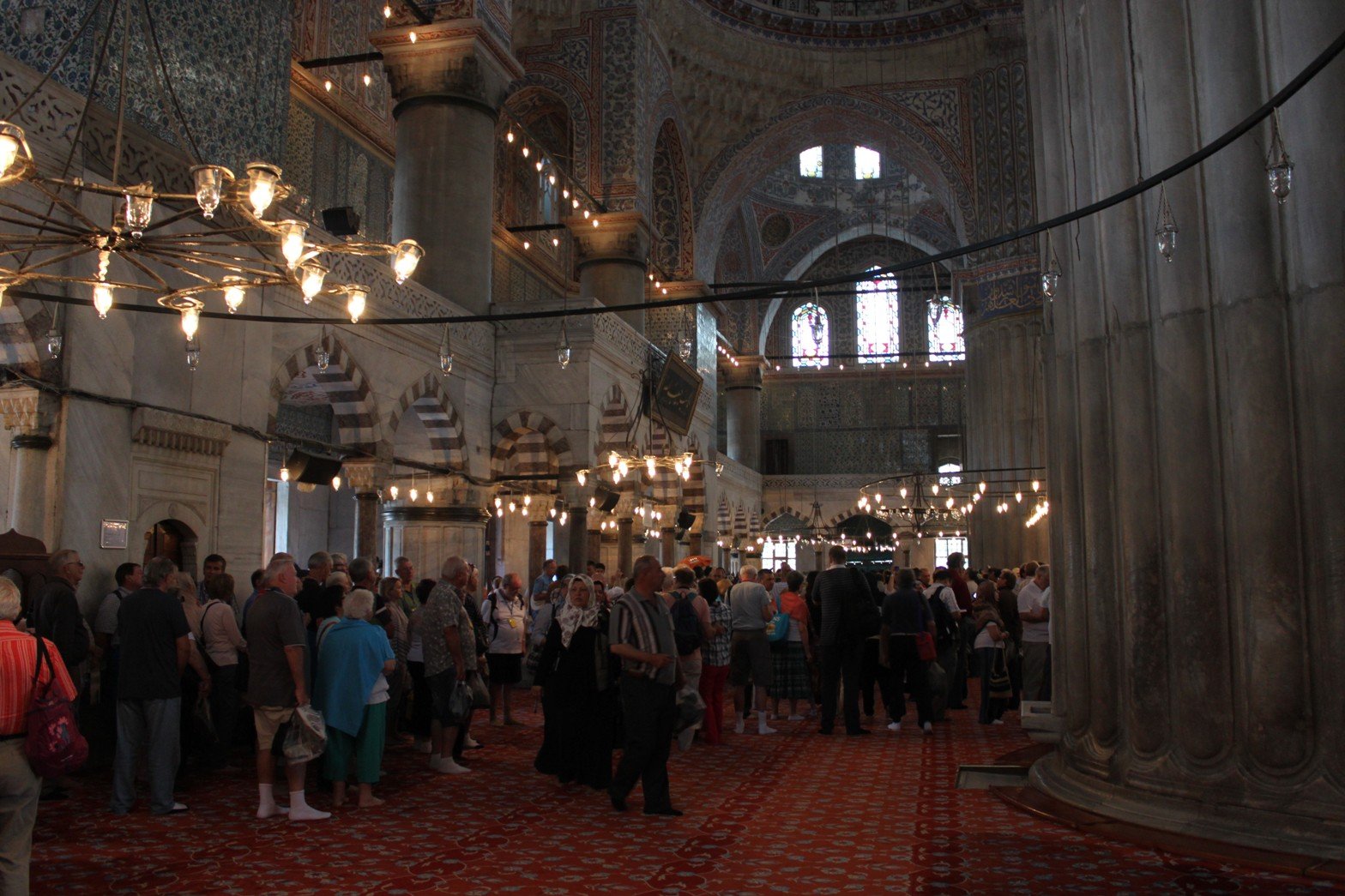
The title of this post should be “The Observations And Impressions Of An American On His First Visit To A Country Where Islam Is The Predominant Religion.” But that’s way too long, so I’m going with “Islam in Turkey.”
Tour guides in Turkey are licensed by the government and licensing requirements are stringent. Tourism is an important industry and the government wants to insure that tourists have good experiences so they’ll come back and so they’ll encourage their friends to visit Turkey too. Our guides (one in Istanbul and another in Kusadasi / Ephesus) were knowledgeable, friendly, flexible and spoke very good English.
They also talked quite a bit about Islam and Islam as it’s practiced in Turkey. I don’t know if that was required by the government or encouraged by their Imams or if they were just good Muslims who wanted to give a bunch of Americans a first-hand account of what their religion is and isn’t. I do know that while I’m no expert on Islam and Turkish history I’m not completely ignorant either, and neither guide said anything at odds with what I know.
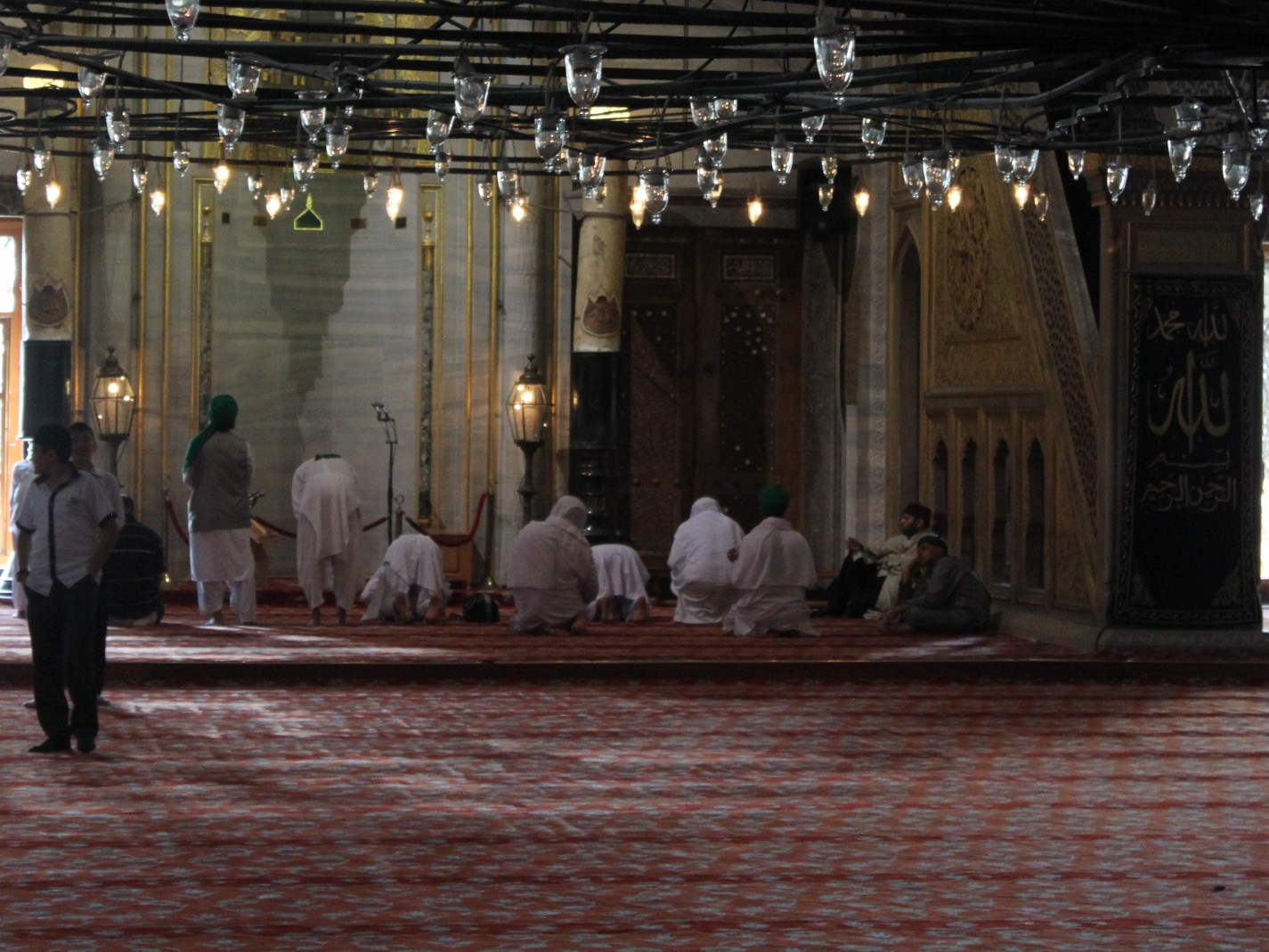
While the vast majority of Turks are Muslims (and most of the Muslims are Sunnis), there are also communities of Christians, Jews, and scatterings of other religions. Both guides emphasized that Turkey is officially a secular state, not an Islamic state. This actually began in the last years of the Ottoman Empire and was made official in 1928 with an amendment to the constitution of the Republic of Turkey. This distinguishes them from most of their Arab neighbors (including Iraq, whose new constitution was written with American assistance and at least tacit approval) who are officially Islamic states.
Turks are not Arabs. The Turkish language has its roots in Central Asia and is most closely related to Mongolian and Korean. Arabic is a Semitic language that originated in the Middle East.
It is illegal to wear “religious dress” in primary and secondary schools or if you’re working in a government office. Our guide in Istanbul said that 12% of Turkish women wear the hijab (headscarf). In Istanbul it looked closer to 50%, but many of those were – like us – tourists from other countries. In Kusadasi I might have seen two, leading me to suspect his figure of 12% is in the ballpark.
We saw women dressed in everything from burkas to miniskirts. Our guides emphasized that any woman in a burka was a tourist from some place like Saudi Arabia and not a Turk. Whether that’s true or not (and again, I suspect it is) it says something – something good – that the guides felt the need to emphasize it.
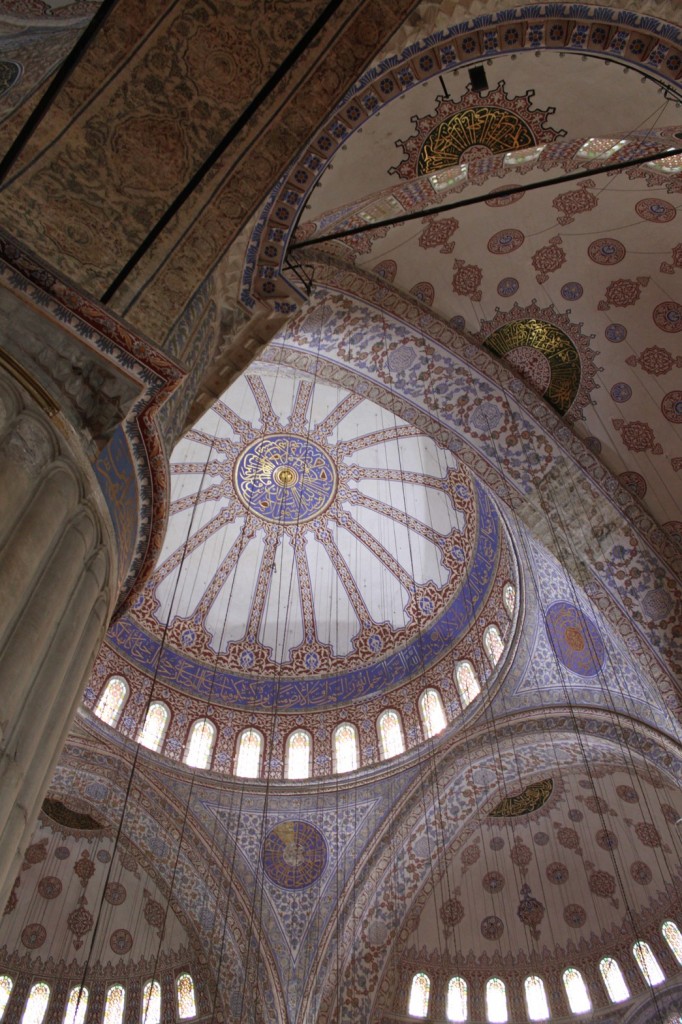
The first thing I noticed on arriving in Turkey were the mosques. The domes and minarets make them easily recognizable. At first glance it seemed like there were a lot of mosques, but Istanbul is a large, densely-populated city – there are about the same number of mosques per person as there are Baptist churches in Dallas. The second thing I noticed was the call to prayer, which goes out over loudspeakers five times a day. It was loud enough to be heard, but I don’t think it would have waked me unless I was sleeping next door to a mosque with an open window.
Our guides said that almost no one goes to the mosque every day and nothing stops at prayer time: traffic keeps moving, shops stay open, schools stay in class. The only thing that stops are tours of the mosques themselves – if you want to visit a mosque don’t go within a half hour on either side of prayer time. Restaurants remain open during Ramadan, the month during which Muslims fast from sunup till sundown.
Beer and wine are readily available – and easier to buy than in some parts of Texas. So is raki, a distilled liquor similar to Greek ouzo. The local beer and wine I had was good but unremarkable; I rarely drink hard liquor and didn’t try the raki.
We visited the Sultan Ahmed Mosque in Istanbul, usually known as the Blue Mosque. It was completed in 1616 and is – in its own way – as beautiful and ornate as any cathedral. It is a working mosque – tourists enter through a side door and a large section is roped off for worshippers only. Everyone is required to remove their shoes (plastic bags are provided for carrying them) and anyone whose dress is considered immodest (usually exposed shoulders or legs) will be given a wrap for cover. Women are not required to cover their heads.
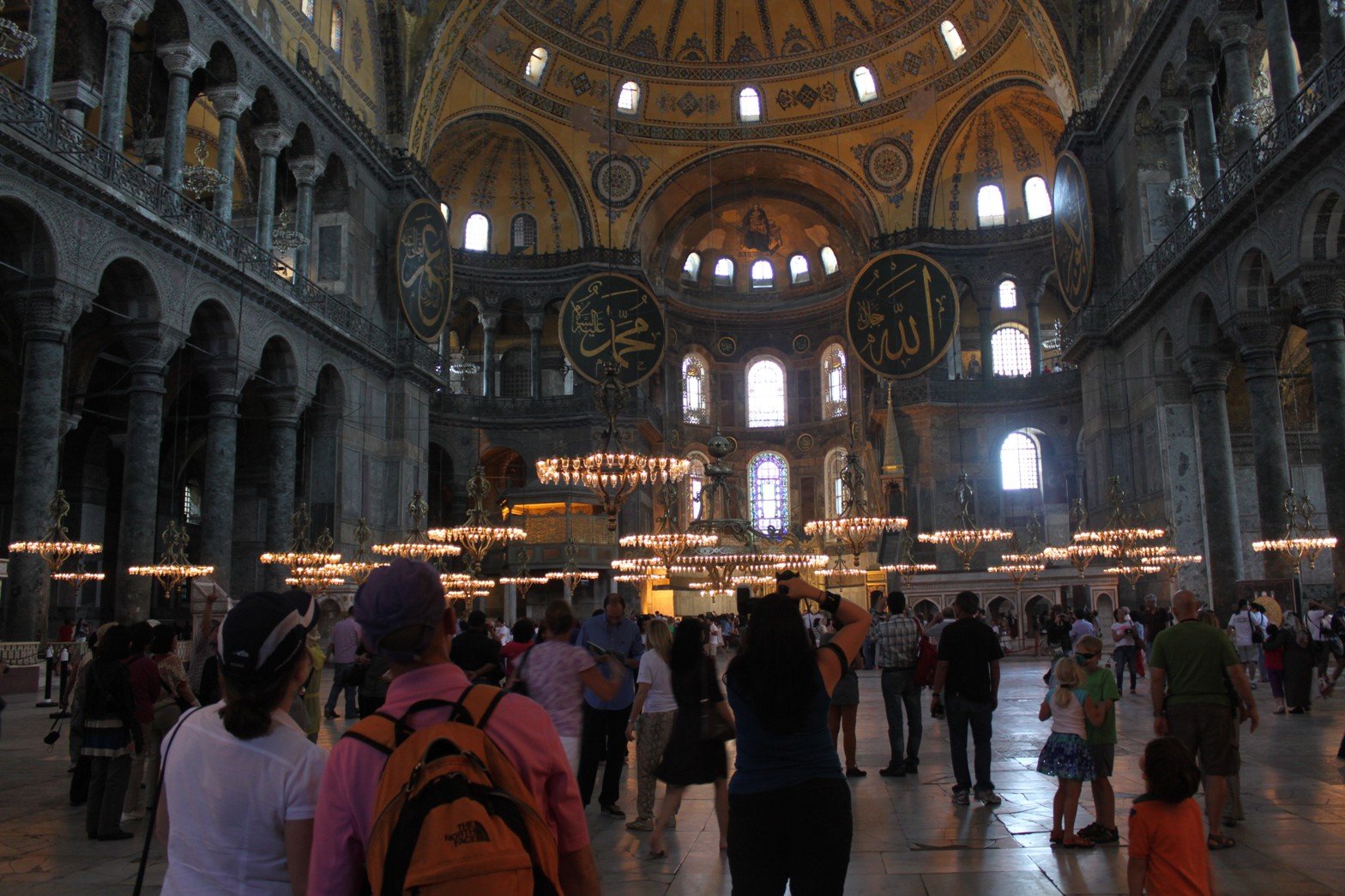
We also visited Hagia Sophia. This Byzantine building was opened in 562 as a Christian church and was the largest cathedral in the world for over nine hundred years. After the fall of Constantinople in 1453 it was converted to a mosque. Islam prohibits images of people, but the Christian artwork was covered in plaster and paint and not destroyed, in contrast to the Taliban’s infamous destruction of 1500 year old Buddhist monuments in Afghanistan. When Hagia Sophia was converted to a museum in 1931 the plaster and paint were removed and the Christian artwork restored.
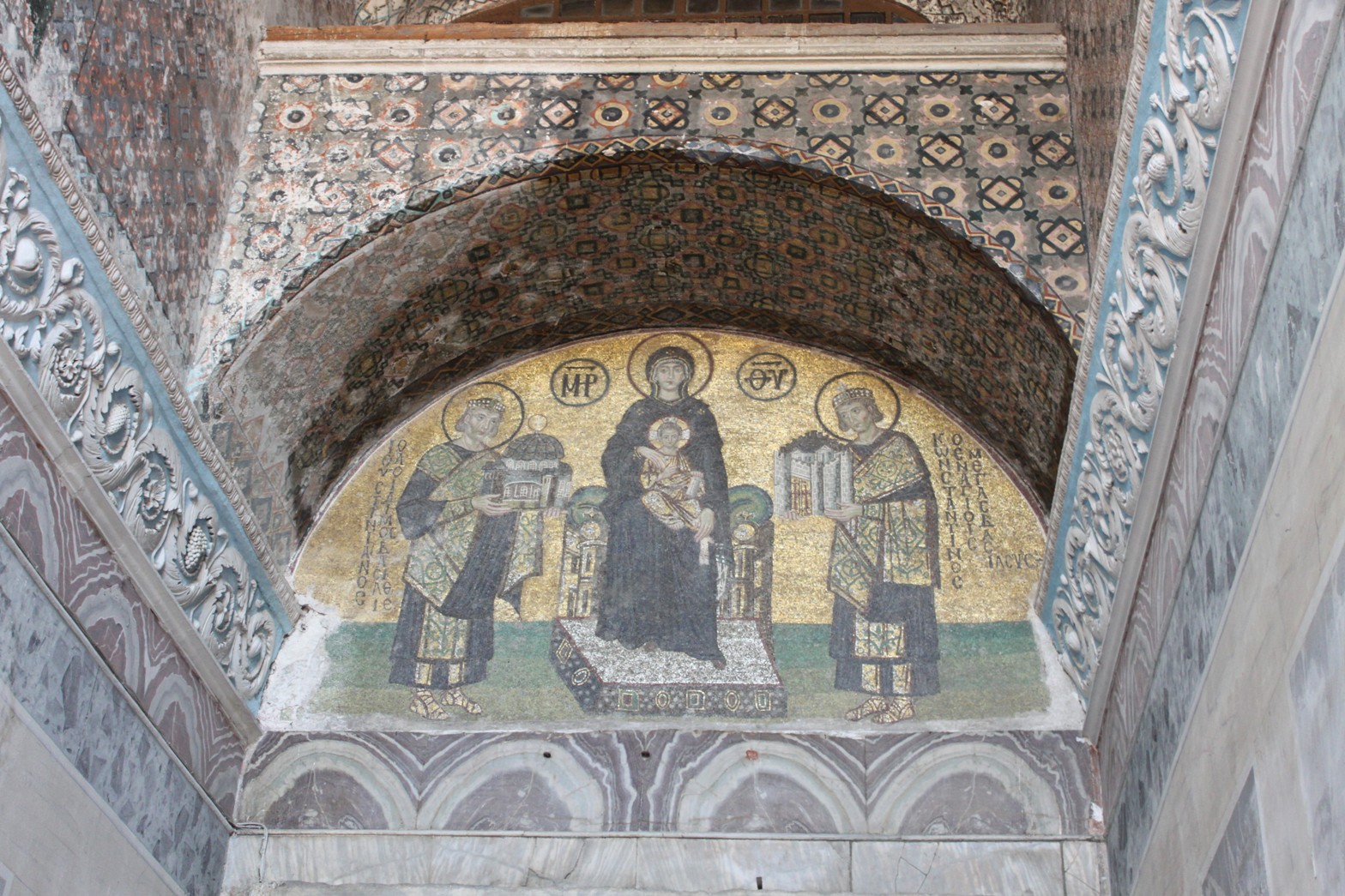
I don’t think for a minute that 2½ days in tourist areas gave me an in-depth look at Islam as it’s practiced in Turkey. But what I experienced in Turkey looked and felt very similar to what I experienced in Orthodox-dominated Greece. And the impact of religion on public life looked and felt very similar to what I experience daily in Baptist and Catholic-dominated Texas.
Had I visited Jordan or Kuwait or Saudi Arabia my experience of Islam would have been very different. Contrary to what many in this country believe, Islam is not a monolithic religion.
I had a great time in Turkey and I’m glad a first-hand look at Islam was part of it.
